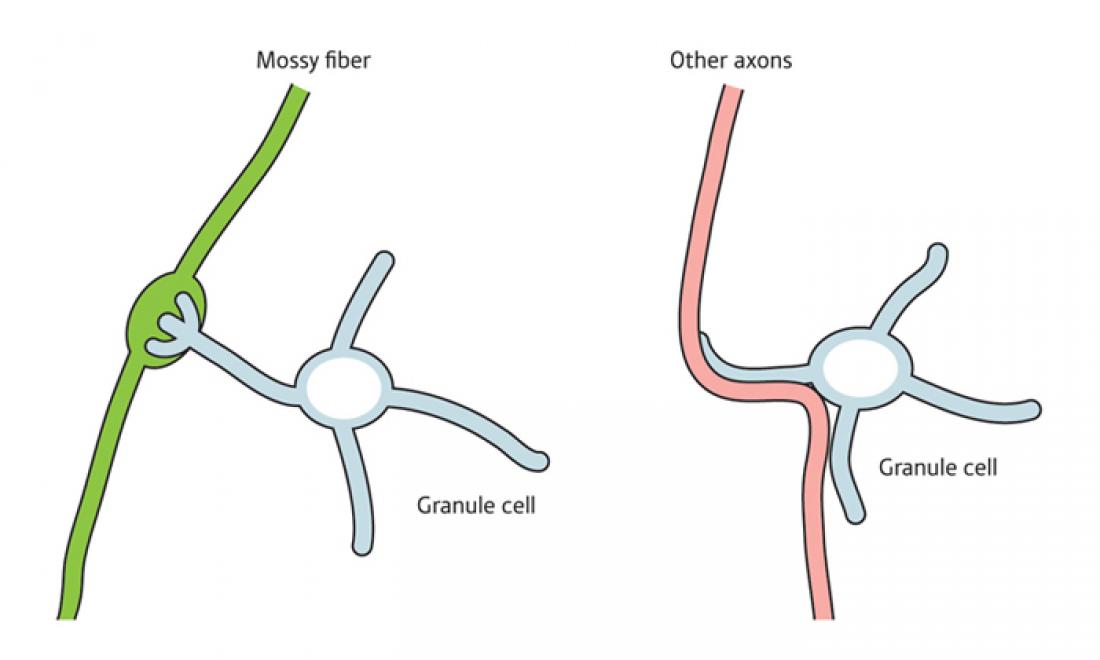Figure 1: Schematic of cultured cerebellar granule cells showing that dendrites form synapses with mossy fibers and display the morphological characteristics seen in vivo (left), but fail to do so when encountering other axons, resulting in irregular synaptic contacts (right).
The brain is a self-assembling computer, in which different types of neurons extend their processes outward to interact with each other over the course of nervous system development, establishing tentative axon–dendrite connections that are subsequently formalized as mature synapses.
There are rules governing which types of connections should be established, although it remains unclear how neurons ‘know’ these rules. “Recognition seems to occur because neurons are always connected with [the] right partners, but the real mechanisms for this recognition remain unknown—and it is even unclear whether such ‘recognition’ really takes place,” explains Masatoshi Takeichi of the RIKEN Center for Developmental Biology in Kobe.
The cerebellum primarily receives inputs from two kinds of axonal fibers: mossy fibers, originating from pontine nuclei in the cerebral cortex, and climbing fibers, which emerge from inferior olivary nuclei in the medulla. Each of these fiber types in turn associates with a specific subset of cerebellar cells; mossy fibers form synapses with granule cells (GCs), while climbing fibers connect to Purkinje cells.
Prior data indicate that these various cells interact indiscriminately early in development but then abort inappropriate connections as the brain matures, and Takeichi and graduate student Shoko Ito recently explored this phenomenon in the context of studying how cerebellar GCs find the right partner (1).
Co-cultures of GCs with pontine tissue showed little evidence of specific interaction between cells at first, but within several days began to exhibit signs of synapse formation. Interestingly, time-lapse movies revealed that dendrites from GCs appear capable of specifically recognizing mossy fibers, forming claw-like structures that physically latch onto these axons (Fig. 1).
GCs showed markedly different behavior when cultured with climbing fibers or hippocampal cells, forming connections that displayed some characteristics of working synapses, but without the full range of morphological changes observed in dendrites from the pontine co-cultures. “Granule cells could form synapses with the correct positioning and morphology only when they met the mossy fibers,” says Takeichi. “This finding was unexpected.”
Overall, these findings suggest that although cerebellar cells can forge tentative links with a diverse array of axons, specific recognition mechanisms are in place to ensure proper synaptic wiring. “We have convincingly demonstrated that neurons do recognize their specific partners even in vitro, where environmental cues which could assist neuronal recognition are absent,” says Takeichi. Exactly which factors facilitate this recognition remains a mystery, however, and he indicates that this will be a focus of future research from his laboratory.
The corresponding author for this highlight is based at the Laboratory for Cell Adhesion and Tissue Patterning, RIKEN Center for Developmental Biology



